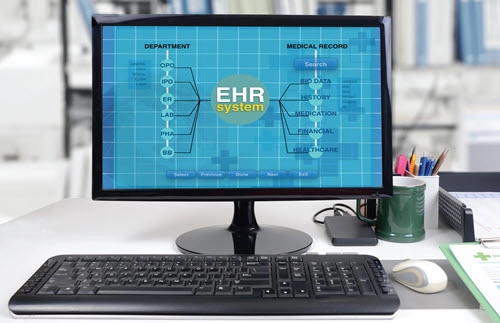Health Information Compliance Alert
Harness CEHRT to Bolster Care Transfers
Tip: Check out ONC’s 360X implementation guidance for extra help.
A user-friendly EHR can supplement your practice workflow and enhance patient engagement. But did you also know that with the right interoperability and tools, your EHR can help with referrals as well as care coordination and patient transitions between providers and facilities? Read on for the details.
Critical: The COVID-19 public health emergency (PHE) has uncovered just how critical data sharing is in healthcare. The pandemic continues to highlight how important a complete and detailed health record is to ensure not only immediate treatment and recovery but also successful long-term care outcomes, particularly for vulnerable communities. The PHE has shown how the lack of these enhanced tools leads to issues for patients transitioning from one facility to another.

However, care transition problems existed long before COVID, and that’s one of the reasons the HHS Office of the National Coordinator for Health Information Technology (ONC) originally started the 360X initiative in 2012.
“Despite major advances in health information technology (HIT) and adoption thereof, the process of patient transitions of care (both transfers and referrals) continues to be fraught with risks of adverse events for the patient due to insufficient information at the time of the care transition,” notes ONC’s 360X online guidance. “In addition, transitions continue to be difficult to track and require excessive steps and manpower for providers and staff, and still does not ensure that patients receive necessary care and do not fall through the cracks,” ONC maintains.
The 360X project aims to boost functionality between EHRs while simultaneously decreasing providers’ administrative burdens, nixing “transcription errors,” and bolstering patient transfers of care, the program guidance suggests.
Currently, the 360X project has extensive documentation and tools promoting EHR interoperability in two case areas under the program’s Integrating the Healthcare Enterprise (IHE) approved and completed profiles: referral management and ambulatory/acute transfer to a skilled nursing facility (SNF). The agency and its partners are working with EHR vendors to boost processes from SNFs to emergency departments (EDs), too.

The pandemic has also impacted the group’s 2021 research goals. Now, they are working with stakeholders, providers, and vendors to improve “Social Determinants of Health (SDOH) needs-based referrals and eConsults (a provider asking a specialist provider a question regarding a specific patient without, at least initially, referring the patient to the specialist),” the 360X materials note.
Remember: Improving interoperability and thwarting information blocking are primary goals of the 21st Century Cures Act final rule. Although many of the EHR technology (CEHRT) conditions of certification requirements outlined in the final rule have been pushed out until 2022 and beyond to accommodate providers, facilities, and payers struggling with the pandemic fallout, you may want to start preparing now and update your health IT products.
If you are in the market for a new software and want to learn more about how your EHR can help with care transfers, the 360X project implementation guidance is a great place to start.
Resource: Check out the most recent 360X update and materials at https://oncprojectracking.healthit.gov/wiki/display/TechLab360X/360X+Home.
Health Information Compliance Alert
- Case Study:
Safeguard Patients’ ePHI With Better Access Controls
Tip: Don’t skimp on emergency access plans. Virtual work has allowed many covered entities (CEs) [...] - HIPAA:
Bypass HIPAA Blunders With These Tips
Don’t move HIPAA to the back burner. You might be wondering if the feds still [...] - Toolkit:
Harness CEHRT to Bolster Care Transfers
Tip: Check out ONC’s 360X implementation guidance for extra help. A user-friendly EHR can supplement [...] - Reader Questions:
Understand How State Vaccine Laws and FERPA Interact
Question: With the emergency authorization of the Pfizer- BioNTech COVID-19 Vaccine for children 5 to [...] - Reader Questions:
Keep Patients Aware of Medical Device Cyber Risks
Question: With the uptick of cyberattacks during the COVID-19 public health emergency (PHE), should we [...]

